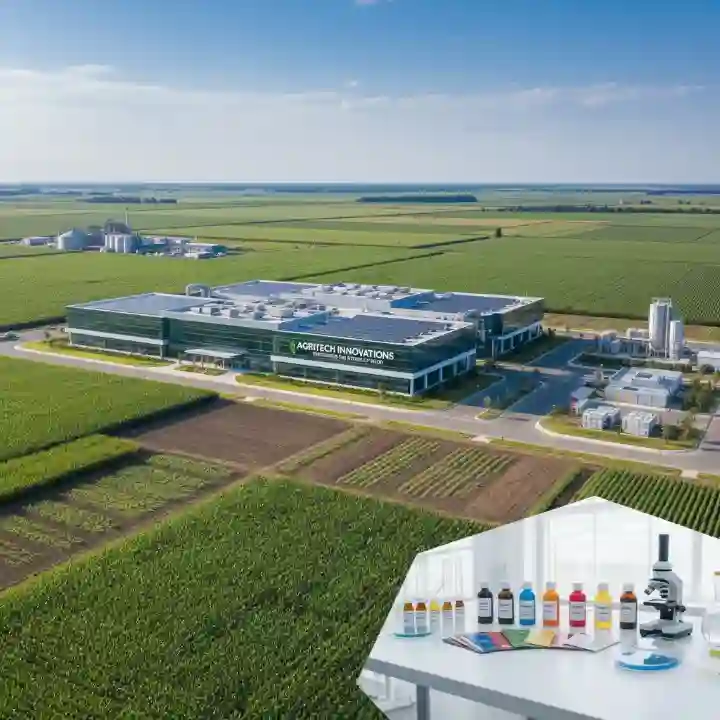Introduction: Corteva at the Intersection of Food, Money, and Farming
I remember meeting a fourth-generation corn farmer at an agriculture conference in Des Moines some time ago. He told me he could manage his entire farm using Corteva’s platform before he finished his morning coffee. Now, that same platform is about to be divided. For business leaders, portfolio managers, and anyone with an interest in the future of food or profits in an unstable world, what happens with Corteva in 2025 is crucial.
What Is Corteva? A Major Player in Agricultural Science
Corteva, Inc. (NYSE: CTVA), was formed in 2019 after separating from DowDuPont. It has become a leader in seeds (with its Pioneer Hi-Bred brand), crop protection products, and the quickly growing market for biological products. Located in Indianapolis and employing over 10,000 people, Corteva combines a history of science with a business approach designed for different economic periods, large production, and operational discipline.
Key Areas of Growth
Seeds: Corn, soybeans, and new hybrid/biotech crops.
Crop Protection: Products for controlling weeds, insects, and diseases, plus a growing range of biological products (natural solutions for managing pests and diseases).
Digital Agriculture & Services: Tools for farm, digital diagnostics, and seed selection tech are becoming more vital to the business.
Biofuels and Sustainability: Investments in low-carbon materials and the shift to new energy sources for the agriculture industry.
2025 Financials: Solid Growth, Measured Confidence
Q2 2025 Net Sales: \$6.46 billion (+6% compared to last year)
Operating EBITDA: \$2.16 billion (+13% compared to last year)
GAAP Net Income: \$1.38B, or \$2.02 EPS in Q2
Full-Year Expectations: Net sales \$17.6–\$17.8B, up 5%; Operating EBITDA \$3.75–\$3.85B; Operating EPS \$3.00–\$3.20 (+21%)
Cash Returns: \$1B planned for buying back shares
Both the seed and crop protection divisions saw increases in profit margins. Corn and soybean technology was a key factor in North America, while Latin America had big increases in crop protection sales, despite some pricing challenges.
The Planned Spin-Off: Why Separate a Successful Business?
In September 2025, Corteva announced that it would divide its seed and pesticide businesses into two separate companies that would be traded on the stock market. The reasons for this include:
Increase shareholder value: Allowing each division to focus on its specific area, attract investors who are experts in those fields, and improve research and development.
Operational focus: Seed and biotech businesses require different sales, regulations, and intellectual property strategies compared to synthetic/biological chemicals.
Faster response: Separate companies can respond more quickly to changes in trade policies, biotech intellectual property, and demands driven by climate change.
Analysts view this situation as similar to separations at Bayer or DuPont, where the thought is that smaller, more specialized companies perform better than large, complex ones over time.
Corteva in Action: Insights and Lessons from the Field
At a farmers’ meeting in Illinois in 2025, executives explained how Corteva’s digital tools have simplified seed selection and crop protection, saving time and money. Recent acquisitions, such as the Stoller Group focused on biological products, position Corteva well in sustainable agriculture, which appeals to food brands that prioritize environmental, social, and governance factors.
Corteva’s efforts in biofuels, in partnership with BP for low-carbon materials, serve as a safeguard against price fluctuations and regulatory issues. The launch of new fungicides (like Forcivo in 2025) addresses new disease problems caused by changing weather patterns.
Strategic Plans: What Investors and Stakeholders Should Pay Attention To
Spin-off progress: Follow SEC filings, details in the prospectus, and announcements of new CEOs as separation plans progress.
Regional factors: Tech in North America. However, increasing profit relies on sales in Latin America/Asia-Pacific and competitive success in Europe, the Middle East, and Africa.
Acquisitions and new technology: Keep an eye out for new biological/biotech tech and partnerships with food or energy companies.
Risk management: Stay informed about crop diseases, regulations, and trade issues.
Challenges and Lessons Learned
Competition: Syngenta, BASF, Bayer, and new biotech companies are all competing for global market share.
Commodity prices: Lower prices for grains and oilseeds can negatively impact seed profits and slow down investment in agribusiness.
Trade policy: Changes in tariffs or supply issues caused by climate change can quickly alter the situation.
Why Corteva Remains a Reliable Company
This comes from SEC filings, company press releases, coverage in the Wall Street Journal, MarketScreener, and live financial data. Interviews with farmers and agricultural professionals provide real-world perspectives that are not just promotional material.
Conclusion: Corteva Changing Agriculture, or Just Another Separation?
Corteva’s planned separation is not just about increasing financial value, it also shows how agriculture, biotech, and food security will be reorganized in the 2020s. The global food supply is unstable, but well-managed, specialized agriculture companies will lead in yields, resilience, and profits. For every business leader, producer, or fund invested in the future of food and fuel, Corteva is a company to watch.
Is your business or portfolio related to agri-tech, crop science, or food?
Share your thoughts, or speak with an advisor about risks and benefits as this agricultural business divides.





